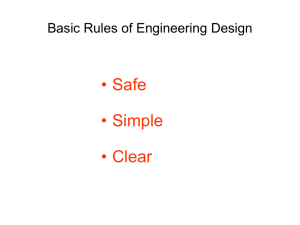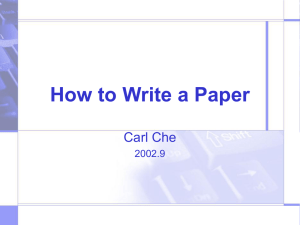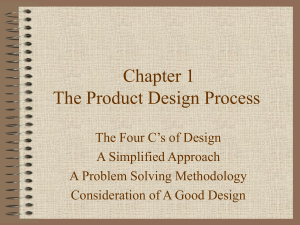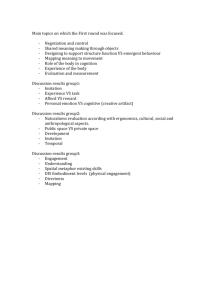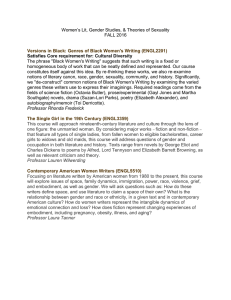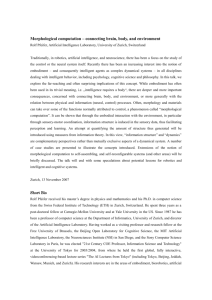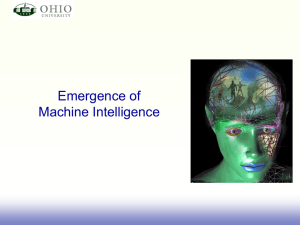Embodiment & Situatedness How Dependent is Intelligence
advertisement
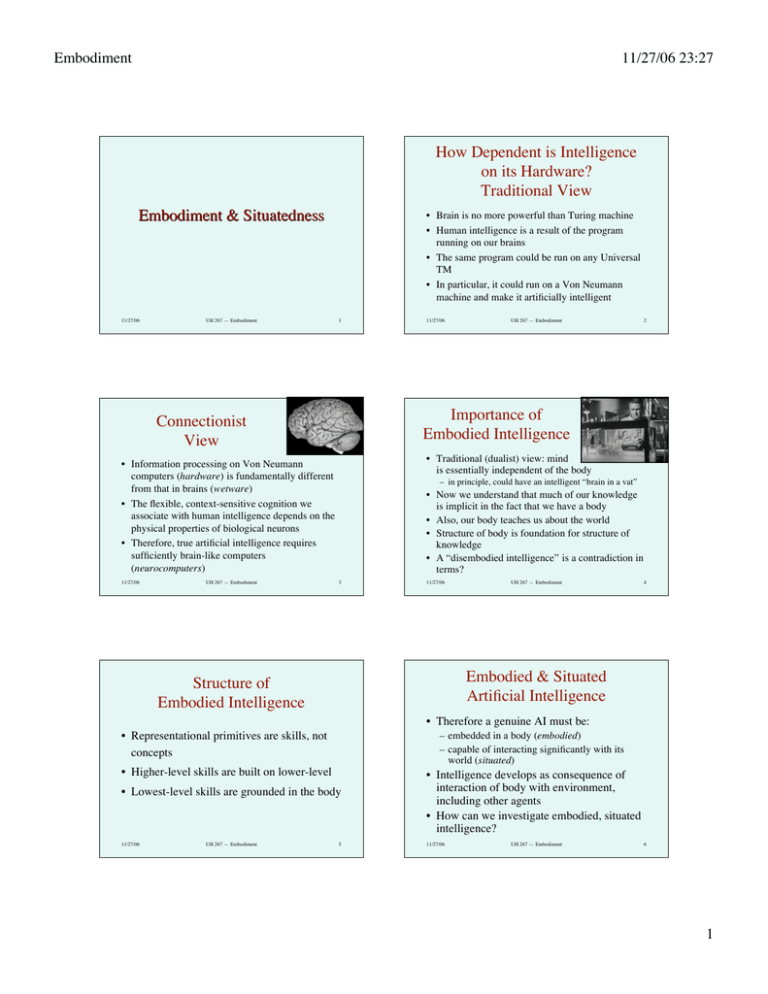
Embodiment 11/27/06 23:27 How Dependent is Intelligence on its Hardware? Traditional View Embodiment & Situatedness 11/27/06 UH 267 — Embodiment • Brain is no more powerful than Turing machine • Human intelligence is a result of the program running on our brains • The same program could be run on any Universal TM • In particular, it could run on a Von Neumann machine and make it artificially intelligent 1 2 • Traditional (dualist) view: mind is essentially independent of the body • Information processing on Von Neumann computers (hardware) is fundamentally different from that in brains (wetware) • The flexible, context-sensitive cognition we associate with human intelligence depends on the physical properties of biological neurons • Therefore, true artificial intelligence requires sufficiently brain-like computers (neurocomputers) UH 267 — Embodiment UH 267 — Embodiment Importance of Embodied Intelligence Connectionist View 11/27/06 11/27/06 – in principle, could have an intelligent “brain in a vat” • Now we understand that much of our knowledge is implicit in the fact that we have a body • Also, our body teaches us about the world • Structure of body is foundation for structure of knowledge • A “disembodied intelligence” is a contradiction in terms? 3 11/27/06 UH 267 — Embodiment 4 Embodied & Situated Artificial Intelligence Structure of Embodied Intelligence • Therefore a genuine AI must be: • Representational primitives are skills, not concepts – embedded in a body (embodied) – capable of interacting significantly with its world (situated) • Higher-level skills are built on lower-level • Intelligence develops as consequence of interaction of body with environment, including other agents • How can we investigate embodied, situated intelligence? • Lowest-level skills are grounded in the body 11/27/06 UH 267 — Embodiment 5 11/27/06 UH 267 — Embodiment 6 1 Embodiment 11/27/06 23:27 “Ant” Microrobots (Brooks, MIT) • About 1 cubic inch • 17 sensors • Can communicate with each other • Goal: push limits of microrobotics • Goal: explore social interactions inspired by ant colony • Applications: explosives disposal, Mars exploration 11/27/06 UH 267 — Embodiment 7 Clustering Around “Food” • “Food” amongst other objects in environment • First “ant” to encounter food, signals others • Others cluster at food source 11/27/06 • Inspired by evolution in that more complex behaviors build on simpler ones • Individual legs “do their jobs” • Legs are coordinated to achieve stability • Leg motion coordinated to achieve locomotion to goal • “It” robot wanders until bumps something • Transmits “Tag” • A “Not It” robot replies “I got tagged” • First becomes “Not It” • Second becomes “It” UH 267 — Embodiment 8 Genghis (Brooks, MIT) Tag Game 11/27/06 UH 267 — Embodiment 9 11/27/06 UH 267 — Embodiment 10 Cog (Brooks, MIT) Genghis (Brooks, MIT) • “Humanoid intelligence requires humanoid interactions with the world” • Form of body is fundamental to cognitive representation Front view & infrared sensing of person – no “brains in vats” • Human-like intelligence requires human-like body 11/27/06 UH 267 — Embodiment 11 11/27/06 UH 267 — Embodiment 12 2 Embodiment 11/27/06 23:27 Learning Hand-Eye Coordination • Before learning to reach to a visual target • Final position of hand different from where looking 11/27/06 UH 267 — Embodiment 13 Learning Hand-Eye Coord. (2) • View from Cog’s eyes during training trial • Cog learns to coordinate appearance of arm’s position with “feel” of arm’s position • Rapid motion is saccade • Also see motiondetection & grouping algorithm 11/27/06 Learning Hand-Eye Coord. (3) UH 267 — Embodiment • Cog attending to visual motion • Orients head & eyes to motion • (Arm & hand motion are not relevant to interaction) 15 Cog: Learning by Imitation UH 267 — Embodiment 11/27/06 UH 267 — Embodiment 16 Cog: Learning by Imitation (2) • Imitation is an important means of human learning • Here, Cog learns to imitate head motions • Recognizes the motion of faces • Cog does not try to imitate non-faces 11/27/06 14 Cog: “Social Interaction” • After 3 hours selftraining • Robot instructed to reach toward any moving object • Successfully reaches towards object • (Hand is nonfunctional) 11/27/06 UH 267 — Embodiment • Cog recognizes objects sufficiently like faces • Imitates their motion with its own 17 11/27/06 UH 267 — Embodiment 18 3 Embodiment 11/27/06 23:27 “Mind Reading” and Other Social Skills Interactions with Other Agents • Being situated includes interactions with other agents • Cooperative interactions: • Need to understand other agents’ mental states & processes • Need to communicate (or misrepresent) one’s own mental state & processes • Non-verbal communication: gesture, eye contact, gaze • Imitation as basis of learning & social understanding – robots with robots – robots with humans • Competitive interactions: – robots against robots – robots against humans – robots against animals 11/27/06 “Robonaut” UH 267 — Embodiment 19 11/27/06 Shared Cooperative Activities UH 267 — Embodiment • Responds to a face with a happy expression • Responds to rapidly moving face with disgusted expression 21 11/27/06 Kismet (Brooks, MIT) UH 267 — Embodiment UH 267 — Embodiment 22 Kismet (Brooks, MIT) • Two-way conversational interaction • Kismet understands intonation & body language, but not words 11/27/06 20 Kismet (Brooks, MIT) • Commitment to joint activity & mutual support • Joint intention theory • Simulation theory • Ability to take perspective of other agent 11/27/06 UH 267 — Embodiment • Example of three-way conversational interaction 23 11/27/06 UH 267 — Embodiment 24 4 Embodiment 11/27/06 23:27 Leonardo Touch-Sensitive “Skin” • Touch-sensitive silicone skin over entire body • Mapped to neural netlike “homunculus” • Here Leo is programmed to notice & withdraw from contact • Cynthia Breazeal’s Lab, MIT • “Sociable Robots” Project • Vehicle for exploring socially guided learning & cooperative activity (video < Breazeal’s Lab) 11/27/06 (video < Breazeal’s Lab) UH 267 — Embodiment 25 11/27/06 Learning to Mimic Expressions • Imitation as a way to bootstrap social understanding & “theory of mind” • Understand behavior in terms of mental states producing it • Leo makes faces • Human imitates • Leo learns what his face looks like • Learns to imitate humans UH 267 — Embodiment Socially Guided Learning • Leo is taught to “turn on all the lights” • Leo generalizes to new situation • Leo displays commitment to joint activity in spite of incorrect action (video < Breazeal’s Lab) (video < Breazeal’s Lab) 11/27/06 UH 267 — Embodiment 26 27 11/27/06 UH 267 — Embodiment 28 Social Implications of Artificial Intelligence 11/27/06 UH 267 — Embodiment 29 5
